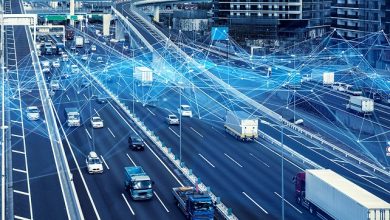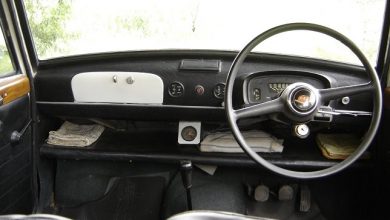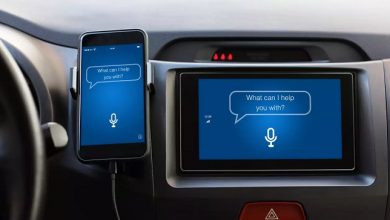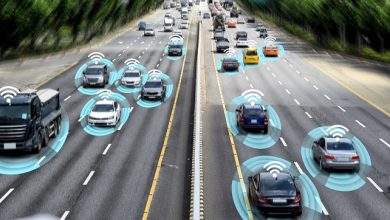If my car could speak to me

“Your car is unique to you. It has been built for you based on your needs and tastes”. Sounds far-fetched? This could become a reality in the next couple of years. Soon, each car will be built around individual user requirements and automotive companies are gearing up to build highly personalized cars for that individual or group of individuals. Already, modern day cars are built with a base design that can be customized to fit the needs of a user. Many features are either software based or easy bolt-on features. Vehicle connectivity capabilities become critical for hyper personalization, as consumer needs and likes change over the ownership lifespan of the car. The advent of electric vehicles has simplified the manufacturing processes car manufacturers. A basic car has a body, battery, drive, motor, wheels, and a few other components, all other additional features are mostly software based, running on multiple onboard computers. Just like any other smartphone or tablet application, these software components require periodic updates and feature additions. This is enabled using ‘Over the Air’ updates, referred to as SOTA (Software Over The Air) and FOTA (Features Over The Air).
Let me explain. Our smartphones, tablets, laptops, and other electronic devices receive updates periodically. These updates are downloaded while you use the device, in the background, and replace or augment the existing piece of technology. The device software is updated over the air, or a new feature is downloaded and installed over the air.
What if your car could speak with you to understand your choices? You could talk to the vehicle and request new features and app downloads. What if the car could identify certain internal issues or predict mechanical failures, and proactively alert your local dealer or manufacturer about the same. Wouldn’t that be an interesting evolution in customer service? This is already happening to an extent, with some vehicles, with other future proof features in the works. All of these are possible because the cars are connected digitally – to the user, to the manufacturer, the dealer, the internet and to the world. Let us delve a bit deeper.
Personalization from design to road

Every car model has its unique formula which is a culmination of the operational practices followed through its design and manufacturing cycles. This process defines the luxury, comfort and safety levels for the customer and the consequent economic value they derive from it. The journey of buying a perfect car starts at its design and in the factory, long before it catches the eye of a customer. The digital enablement of the car does not start on the road, but it begins much earlier in the research lab and the design studio. From this initial phase a vehicle takes form on the smart factory floor. The connected car is designed to be safe, efficient, and comfortable and these features cannot be an afterthought. Many components inside a car are designed in a way that the software running on them can be updated to offer different features or functionalities as per the user’s choice. Thus, the car is seeded digitally if we may say so. The digitalization journey then continues into its manufacturing process.
Along the production line, as each stage of the car is built, new features are embedded as software applications into the car. These are highly personalized based on the region where the car will be used, the regulations of that country, the choices expressed by the user and various other factors. At the end of the manufacturing process, no two cars will be the same. When the car reaches the user for the first time, it is already personalized. As the user drives the car around, they could use OTA enabled features to further personalize the car based on their changing needs. So, every car, in the future, will be born digital, intelligent and connected.
Personalization of the car

We can look at personalization of the car in three major areas – the telematics of the car, infotainment within the car and in-car applications. Car telematics helps the user to use the car optimally and proactively become aware of the issues that may arise in the car, and get the problems rectified. The manufacturer can collect information about the car’s performance and can proactively reach out to the user in case of any abnormalities. Infotainment comprises high quality music, video, car based or cloud games, and other such content, which is enabled through the connected car infrastructure. The connected car can provide personalized recommendations to the user on-demand. The third and final aspect is quite important. Various features like driver assistance, other safety applications, voice navigation, and other similar applications. Each of these choices is different for each user and is achieved using a combination of software and ubiquitous connectivity.
5G Connectivity for the car

One of the key enablers for this hyper-personalized connected car is the fact that it maintains high quality connection to a mobile network. Not just any mobile network – if the full capability of personalization has to be derived, we need a high-speed, always-connected mobile network service that can promise low latency and high reliability. This implies that the car has to connect with at least a 4G, and preferably 5G network to ensure that it is truly “connected”. Similarly, during the manufacturing process, the car, and the production line, should both be connected using a very reliable 5G network to ensure all the personalization happens along the production process. During the design of the various onboard computers, it is essential to incorporate a 5G modem as the medium of communication. The embedded computers inside the car are connected to the external world using this dependable 5G link.
5G in the manufacturing process

Apart from connecting to onboard computers using a 5G network, the manufacturing line also requires a reliable inter-connect machines and to ensure connection to central controllers of the production process. At present most production lines are connected using dedicated cabling, or other wireless technologies such as Wi-Fi. By upgrading to a 5G connection, many inefficiencies can be eliminated from the production process. For example, adding a new machine or a robot in the line, re-ordering the line, introducing new steps or any dynamic changes can be easily carried out if the machines are interconnected using a wireless 5G network. Similarly, moving assets around a factory or warehouse, including automated guided vehicles or drones, which are used in the production process for fetching raw materials or any other activities inside the factory can be seamlessly connected with a private 5G network, as cellular connection inherently supports mobility. Multiple ultra-high definition (UHD) cameras can be used to inspect the quality of incoming raw materials or the car itself at various steps using an edge computer placed inside the manufacturing unit, vision systems / video analytics running in the edge computer, and a reliable high-speed 5G connection. There are many examples that demonstrate how a 5G network can enhance the design and manufacturing process of a car. The network itself can be a slice of a public 5G network or can be custom built for the factory as a 5G Private network.
5G network while in use

SOTA / FOTA feature enables a vehicle manufacturer to upgrade the onboard software when the car is well connected to the manufacturer’s server using a reliable 5G network. Similarly, to add new features / applications to the car when desired, the manufacturer or the car can initiate a software download or enable online transactions using the 5G connection. The car manufacturer can collect data from the car telemetry units and use that information to alert consumers about preventive measures. They can also aggregate this information from multiple cars to arrive at certain patterns that can help improve the overall consumer experience.
When the car is taken to the service centre for maintenance, the 5G connection there comes into play for reading diagnostics data, uploading and downloading new software versions.
What’s more with a connected car and 5G

The next level of advancement has to do with Cellular Vehicle to Anything connectivity (C-V2X). This technology uses a 5G network to connect a car to nearby street infrastructure such as traffic lights, blind spot warnings etc., with other cars on the road to exchange traffic information, and with the devices of pedestrians as well. This will hopefully lead to safer and more secure road travel. This is not limited only to passenger cars but extends to other road mobility systems as well. Extended further, this can be the starting point for means of integrated multi-modal surface transport in a city. A reliable and secure 5G connection becomes the foundation on which these services are enabled.
In conclusion, a dependable and secure 5G network is an enabler for the digitalization and personalization of vehicles. In future hyper personalized cars and C-V2X technology will become a reality, enabled by underlying private and public 5G networks.
Tata Communications is already working with enterprises and automotive OEMs to embed 5G connectivity to enable a vehicle to be born-connected. We are helping companies to build private 5G networks, to enable factory automation and in-factory OTA updates.
If you are interested to learn more about this topic you can reach out to the author, to discuss connected car technology, the deployment of Private 5G and how you can benefit from this technology.
Author:

Vishy Ramaswamy
Vice President, 5G & Digital Incubation
Tata Communications Ltd.
Viswanathan Ramaswamy, commonly known as ‘Vishy’, is a telecom industry leader with over 31⁄2 decades of experience in the communications industry. He has a vast knowledge about various networking technologies and the associated IT solutions. He has been a thought leader in the areas of technology convergence and industry application of mobile network technologies. He is currently the Vice President for 5G and Digital Solutions Incubation in Tata Communications. Prior to this he has worked with companies like Wipro, Vodafone India, AT&T and Crompton Greaves Ltd.
Published in Telematics Wire





